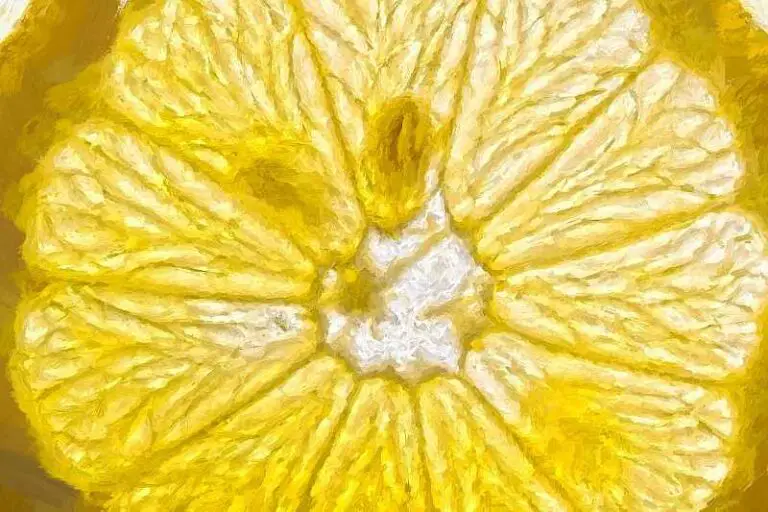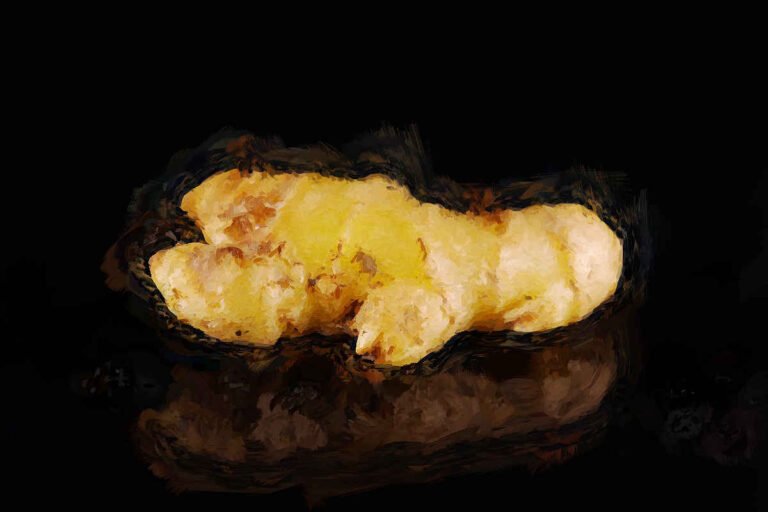Tepache Recipe: Ferment Pineapple Into A Delicious Drink
How do you make tepache at home? Grab a pineapple, some sugar and water, drop them in a jar and wait. See how easy it is to make it with our recipe.
As you might know, pineapple tepache, or tepache de piña as they call it in Mexico, is an easy fermented home brew made with pineapple scraps, sugar and water.
A good glass jar and some tlc will complete the process ( a fermentation airlock is not necessary ).
The recipe requires a very short fermentation, usually a few days, and thanks to the fact that it hardly contains any alcohol it can be drunk by the whole family.
The taste is incredible.
Imagine a very refreshing sweet but tangy soda somehow similar to flavoured water kefir but different from pineapple wine or alcoholic beer.
And the best part is how amazingly easy it is to make it at home.
I don’t know how it is for you, but in our book when “simple and delicious” make it to the same sentence we need to try it.
And drink it or eat it often I should add…
So fermented pineapple tepache it is then.
P.S. If you also have some watermelon handy try our fermented lemonade and wine recipes!
How To Make Tepache
Beside being one of the easiest fermented drinks one could make at home, pineapple tepache, just like Russian bread kvass, Blaand and fermented watermelon rinds, is also zero waste.
Well, the traditional tepache recipe is, as it only uses scraps like core and rind, but nowadays, more often than not, when people prepare it they prefer to use the entire fruit.
But if you really wanted to brew a batch worthy of the heavens you should try fermenting fresh pineapple juice in its pure form.
Once you’ve tried it you’ll never go back, believe me!
As to make it at home you only need pineapple, water and sugar, it is very important to choose the best ingredients.
P.S. If you are wondering whether you need to add a “starting culture” to begin fermentation the answer is no.
In fact, just like many other traditional drinks, tepache is wild fermented.
What that means is that the fermentation process is started and carried on by the yeasts living on and in the pineapple fruit, together with those caught from air.
It’s true though that in some cases, and especially during the cold months, when fermentation is very slow, one could help start the process by using a culture.
And there would be nothing wrong with that.
If I were to pick a starter I think I would prepare a “pineapple bug” or a yeast water or decide to make the brew a bit more kvass-like and use a spoonful of my sourdough starter.
In all fairness you could really use anything you have handy, but if I were you I would stay away from whey.
Choose The Right Pineapple
As with any other fruits or vegetables you are going to ferment, pineapple must be ripe, ready to eat and juicy.
It should have no brown bruises nor evident marks and should not be sending out strange off-like smells ( if you have smelled it once you know what I am talking about! )
If you are lucky enough to be growing your own fruit you already have the top ingredients at hand, but if you don’t, organic produce would be your best choice.
If “conventional” is all you are able to find, my advice is to discard the rind and only use core and flesh for the recipe.
Because of its groovy and rough nature, pesticides and chemicals are almost impossible to remove from pineapple peel.
Choose The Right Sugar
To make tepache de piña the traditional Mexican way one should use oscuro ( dark ) piloncillo sugar.
Piloncillo sugar, also known as panela or rapadura sugar, is an unrefined whole cane sugar produced by boiling then evaporating sugarcane juice in its pure form.
It is 100% natural: nothing is added to it and nothing is removed.
Furthermore, this type of sugar has a very complex and pleasant flavour profile that will enrich your drink in ways that brown sugar never could.
So making tepache using panela is the best way to go but, if you cannot find it, go for muscovado sugar or kokuto sugar.
Alternatively, I believe unrefined coconut sugar could work just as well.
So how do you make tepache?
This way.
Traditional Tepache Recipe
*** using only rind and core ***
This recipe will produce 2 litres ( ½ a gallon ) of fizzy pineapple tepache
INGREDIENTS
- 1 medium size pineapple
- 2 litres ( 1 gallon ) of water
- 4 full tablespoons of sugar
- cinnamon ( optional )
- cloves ( optional )
STEPS
- Thoroughly wash the pineapple then cut off the bottom and the top part
- Remove core and all rind making sure to leave some flesh attached to it
- Set the flesh aside and chop rind and core into 3 cm ( 1 inch ) pieces
- Warm water ( warm, NOT hot ) and dissolve sugar in it
- Place pineapple scraps and sugary water into a jar or glass bowl then cover it with a cloth or paper towel
- Let it sit for 24 hours, shaking or stirring regularly, then strain the liquid
- Pour the liquid into a jar, seal and let ferment for 48 hours
- Drink as is or bottle and continue the fermentation process for 48 more hours
TIPS
How To Make A Fizzy Pineapple Tepache
Many wonder how to make tepache fizzy as they prefer a sparkling drink over a still one.
And they also believe it must involve very complex procedures like injecting the brew with CO2 or using some strange devices.
Well nothing could be farther from the truth.
In fact, obtaining a pleasant and fizzy tepache is as easy as using a little sugar at the right time.
Follow the steps above up to number 7 then continue as follows
- Add 1 teaspoon of sugar for every 1 litre bottle.
- Shake it to completely dissolve the sugar
- Let it ferment for 24 – 48 hours
- Drink or refrigerate
That’s it.
Just an FYI
These types of fermented drinks can build a considerable amount of pressure inside the vessel, that’s why I recommend using plastic bottles over glass ones as they are safer.
Even though the traditional recipe only uses pineapple, water and sugar, Mexicans also usually add spices, in particular cinnamon and cloves.
The best thing to do is to try both versions, experiment a little and see which one you like the most.
How To Make Tepache More Alcoholic
The alcohol content of traditional tepache usually ranges between 0.5% to 2% but it’s possible to make a more alcoholic version of it.
And the process is also quite straightforward.
Although it might be handy to use a refractometer to determine the necessary sugar content for the desired ABV ( alcohol by volume ) level, it is possible to achieve a good alcohol percentage without it.
And to do so we need to play with sugar and time.
Here is how.
First let’s consider that the average pineapple sugar content is roughly 10 grams for every 100 grams of fruit.
As a reference the sugar content of ripe grapes ranges between 15gr to 17gr for every 100 grams of fruit.
So the first and most obvious thing we need to do is increase the amount of sugar we add to the brew.
For Tepache Made With Pineapple Juice
If you intend to make tepache with pure pineapple juice you will need to add 60 grams of sugar for every kilogram of fruit.
Like this
- Weigh the pineapple
- Cut it into pieces and throw it in a blender
- Add the necessary amount of sugar
- Blend until fully liquid
- Pour everything in the chosen container
- Seal it with an airlock
For Tepache Made With Rind And Core
On the other hand, if you are following the traditional tepache de piña recipe with rind and core, proportions and method will be slightly different.
Here is how you need to proceed.
- Chop rind and core to the desired size
- Weigh them and write down the weight
- Place them inside the desired container.
- Fill up such container with water ( remember head space! )
- Pour out the water and weigh it
- Add up produce weight and water weight
- Calculate 15% of that total weight: this is the amount of sugar you need
- Add sugar to water and fully dissolve it
- Pour the sugary solution back in the container
- Seal with an airlock
The following steps are the same for BOTH recipes
- Continue fermentation until there is NO EVIDENT activity inside the airlock
- At this point your tepache will be completely still ( no bubbles )
- Bottle as is or prime it to obtain a sparkling tepache champagne
As we have explained in other circumstances, wild yeasts die in high alcohol solutions.
That is why if you are happy to drink a 5% to 7% abv tepache wine you can proceed as described above.
BUT if your goal is to obtain, alcohol wise, something similar to grape wine you must add commercial champagne yeast to the brew.
READ HERE HOW TO INCREASE THE ALCOHOL CONTENT OF ANY FERMENTED DRINK
TEPACHE FAQs
How Long Does Tepache Take To Ferment?
The fermentation process occurs in two phases called first and second fermentation.
After the “infusion period”, the time you allow pineapple to soak in water and sugar, you will let the strained solution ferment for around 48 hours.
Keep in mind that temperature can greatly affect the time needed for yeasts to reproduce and consume the sugars.
If you are brewing during hot summer days your solution might be ready in 24 hours but it will definitely need more than 48 if you are fermenting with cold weather.
If you like to consume a more sugary drink you can stop fermentation at this point and start enjoying your just brewed tepache.
But if you like it fizzy, less sugary and with a more complex flavour you will have to continue with the secondary fermentation.
As explained in the recipe guideline, all you need to do is add 1 teaspoon of sugar in every 1L bottle, seal and ferment for 48 hours.
And remember the temperature factor.
So now you know how long tepache needs to ferment for!
What Happens If You Ferment Tepache Too Long?
Nothing bad really, you will simply make pineapple vinegar.
To be exact you will obtain pineapple scrap vinegar ( PSV ) or pineapple flavoured vinegar, because real pineapple vinegar, just like any other fruit vinegar, is made with pure juice.
How Often Do You Burp Tepache?
If you use Fido jars or Bormioli Four Seasons jars there is no need to burp the ferment.
If, instead, you opt for another vessel you should probably release CO2 once or twice a day depending on the temperature of your house.
Can You Make Tepache With Other Fruits?
Yes, it is possible to brew it with any fruit variety but my favourite, and the ones I suggest you start experimenting with, are mangoes and peaches ( or nectarines ).
You can use them individually or mix them together but you can also add them to the traditional pineapple recipe.
And if you happen to have beetroots add them to your tepache for a wonderful hot pink drink or make beet kvass
Speaking of great combinations I strongly recommend you try ginger pineapple tepache and chilli or peppercorn pineapple tepache.
You won’t regret it!
How Do You Drink Tepache?
First and foremost you can drink tepache as is but if you like a lighter version of it you can add ice or sparkling water.
Adding lemon or lime slices and/or fresh fruit to a glass of tepache is also very common.
To make an interesting tepache drink, mix pineapple tepache with beer or with a dark spirit like rum or whisky or use it to make some delicious fermented cocktails.
You will take your brew to a completely new level.
Speaking of beer, one of my favourite ways to serve ( and drink! ) tepache is mixed with ginger beer or with crushed ice and mint.
It does not get much better than that on a hot summer day.
Now you are all set to start brewing your first batch of a wonderful pineapple drink that all the family will happily enjoy.
We look forward to hearing all about your ideas, variations and suggestions so please share them with us in the comment section right below this blog post.
See you soon.







